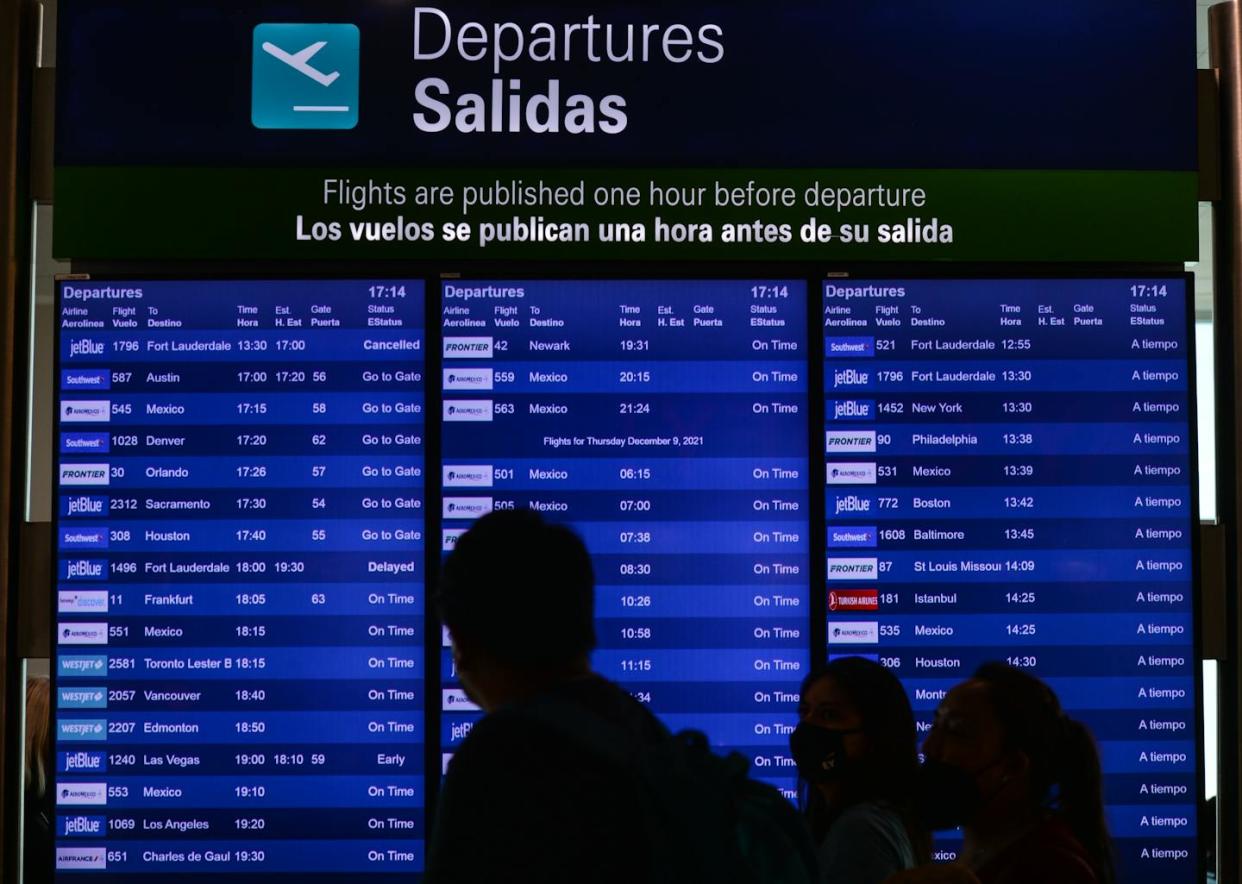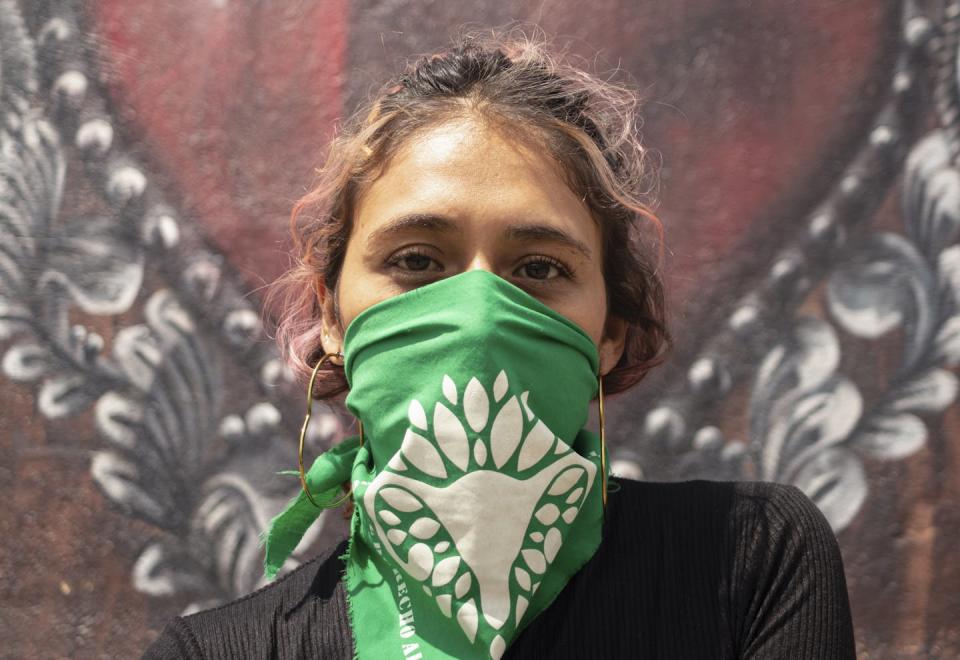Mexico emerges as a destination for Americans seeking reproductive health services – not for the first time

When its six-week abortion ban went into effect on May 1, 2024, Florida joined nearly two dozen other U.S. states that ban abortion or greatly restrict it.
These laws came into effect after the Supreme Court’s 2022 decision to overturn Roe v. Wade ended nearly 50 years of the constitutional right to abortion in the United States.
Florida health officials in 2023 reported more than 84,000 abortions statewide, including nearly 7,800 from out-of-state residents.
The Tampa Bay Times recently reported that about 2 in 5 abortions in Florida over the past six years occurred in the first six weeks of pregnancy, meaning that roughly 60% of the procedures performed over that time frame would be illegal under the new restrictions.
The new laws in Florida and other states are sending some Americans across the border into Mexico to access an abortion, where the procedure was legalized in recent years.
Clinics in Mexico do not require proof of residency, so solid numbers about who they are treating are hard to come by. But providers in Mexico report they have been seeing more Americans.
In 2022, Luisa García, director of Profem, an abortion clinic in the border city of Tijuana, told NPR that the percentage of patients coming from the United States had jumped from 25% to 50% in just the two months following the Dobbs decision.
My research and teaching focuses on gender and sexuality in Latin America and the Caribbean. I often ask students to think about the differences between the United States and Latin America — and the struggles the two regions share.
Different paths
In recent years, the U.S. and Mexico have each struggled over access to abortion care, with the two countries moving in opposite directions.
The year before the U.S. Supreme Court reversed Roe, the Mexican Supreme Court ruled the criminalization of abortion by the northern state of Coahuila unconstitutional. This decision set a precedent that led to decriminalization at the federal level in 2023.
Change has since been slow. Only 13 of Mexico’s 31 states have modified their penal codes to reflect the court’s resolution, with Jalisco being the latest state to do so, in April 2024.
Unlike in the U.S., federal laws in Mexico do not automatically overrule local ones. But Mexican women living in states where abortions are illegal can still have one in a federally run hospital or clinic. And the federal statute protects the staff of those facilities from punishment.
Marea Verde movement
A crucial force behind the legalization of abortion care in Latin America is a movement called Green Tide, or Marea Verde, which emerged in Argentina and expanded across the region over the past two decades.
Although it began as a collective fight for abortion rights, Green Tide has grown to encompass issues such as the prevention of violence against women and members of the LGBTQ+ community, as well as femicide – the violent death of women motivated by gender.
Expansion of abortion access in Mexico
Following the U.S. Supreme Court’s decision in 2022, Mexican organizations offering abortions have expanded locations to increase choices for Mexican and U.S. residents seeking care. For example, Fundación MSI opened its newest clinic in Cancún late last year.
It chose this location intentionally, MSI’s Latin America regional managing director told the health news website Stat. Cancún’s status as a popular tourist destination means that multiple U.S. airports offer direct flights for about US$400 round trip. In-person abortion services range from $250 to $350. MSI’s website caters to Americans by offering information in English and featuring links to search for flights.

To assist those traveling to Mexico, Mexican and American abortion rights groups created the Red Transfronteriza, a transnational network that supports those crossing the border in search of care but whose primary mission has become the shipping of misoprostol and mifepristone, the pills generally used to induce abortions, into the United States.
One group that is part of the network on the Mexican side of the border is Guanajuato-based Las Libres, or The Free Ones. In September 2023, its founder estimated that her organization had sent abortion pills to approximately 20,000 women in the U.S. since the Dobbs decision.
Red Necesito Abortar, or I Need to Abort Network, was founded in 2017 by Sandra Cardona and Vanessa Jimenez in the northern city of Monterrey, Nuevo León, to help those seeking abortion services.
History of abortion, US-Mexico border
Although the Dobbs decision brought renewed attention to the issue, the relationship between the United States and Mexico and people from both countries seeking abortions has a long history.
Women’s studies professor Lina-María Murillo, who studies the U.S.-Mexico borderlands and teaches a course on global reproduction, explains that abortion in the United States was legal and performed by midwives before the Civil War. In the following decades, declining birth rates and gender inequality led to restrictions across the country and a nationwide ban in 1910.
As Murillo’s research has documented, criminalization led women seeking abortions to travel to Mexico more than a century ago.
These border crossings ultimately declined as Mexican abortion restrictions were enforced and clinics shut down by the late 1960s. At the same time, U.S. activists and doctors contributed to the narrative that portrayed Mexico as a dangerous place where “back alley” abortions were performed by “butcher” physicians. Murillo argues that these myths contributed to a loosening of abortion restrictions in several U.S. states like California and New Mexico, helping set the stage for Roe v. Wade.
As elections loom closer in the United States, abortion will likely take center stage once again – including in Florida, where a referendum to reverse the six-week ban will be on the November ballot.
This article is republished from The Conversation, a nonprofit, independent news organization bringing you facts and trustworthy analysis to help you make sense of our complex world. It was written by: Alejandra Marquez Guajardo, Michigan State University
Read more:
Alejandra Marquez Guajardo does not work for, consult, own shares in or receive funding from any company or organization that would benefit from this article, and has disclosed no relevant affiliations beyond their academic appointment.

